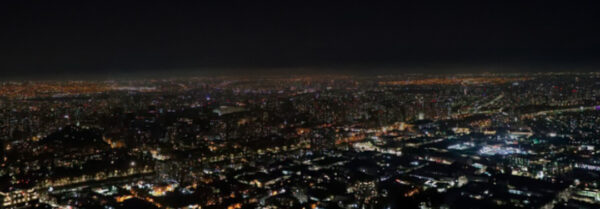How will the technical specifications of the New Lighting Standard be applied?


Posteado
Cielos Chile
schedule Tuesday 27 de February
The regulation seeks to prevent the effects of light pollution through limitations on outdoor lighting throughout the national territory. In this article, we review the main technical aspects of the regulation that comes into effect from October 19, 2024.
In 2023, the update of the lighting standard was published, which begins to take effect in October of this year and aims to mitigate the problem of light pollution. Its main difference from the regulation that was in force since 2014 is that it expands its scope at the national level, with differentiated requirements for areas fundamental to astronomy and biodiversity.
What does the New Lighting Standard regulate?
The regulation will establish restrictions on outdoor lighting, that is, luminaires corresponding to pedestrian lighting, which illuminates sidewalks, parks, and common areas; vehicular, present on highways, roads, and urban streets; industrial, intended to illuminate areas of productive activity; ornamental or decorative, which illuminates building facades and monuments; and sports or recreational lighting, present where sports activities are carried out.
What does the Lighting Standard establish about the blue portion of light?
“We do not need blue at night, neither we as humans, nor mammals, insects, or birds. During the day, it is vital to synchronize the circadian cycle but at night, that cold light is not useful and is a problem. One of the main changes people will see is that the new regulation limits the blue light content,” says Iván Kopaitic, head of the Photometry and Quality Control Laboratory at PUCV.
Light is composed of different wavelengths of electromagnetic waves, of which the human eye can only see a limited part corresponding to the visible light spectrum. The human brain interprets the different wavelengths as colors ranging from blue to red. Spectral radiance measures the amount of energy that a light source emits at different wavelengths in a given space. Through this magnitude, it is possible to measure the blue portion of the visible spectrum present in a luminaire.
Meanwhile, color temperature is a value in Kelvin that relates to the temperature at which a black body acquires a certain color. The higher the value in Kelvin, the cooler the color temperature will be.
The New Lighting Standard sets limits on the blue portion of light present in outdoor luminaires, through restrictions on spectral radiance and color temperature. In the case of pedestrian, vehicular, and industrial lighting in Special Protection Areas, the regulation sets the blue portion limit of a luminaire at 1%. In the rest of the national territory, for this type of lighting, the limit will be 7%. “Light is a mixture of all colors and the harmonious composition of those colors makes it appear white. If you start removing a color, more visible colors begin to form: by reducing the blue content, a light source starts to look more yellow or orange,” explains Kopaitic.
Regarding ornamental and decorative lighting, in Special Protection Areas the color temperature cannot exceed 2200 K, that is, similar to the color of sunset light. In the rest of the national territory, the color temperature of ornamental lighting cannot exceed 2700 K, a light with a color similar to that of a warm-toned indoor bulb. Meanwhile, in sports venues, luminaires cannot have color temperatures higher than 3000 K or 5000 K, a color comparable to midday light.
What are the regulations regarding light intensity and direction?
Another relevant limitation imposed by the new law is regarding luminous intensity. This magnitude, which is measured in candelas (cd), represents the energy emitted in a specific direction, for example, the light flow that a post projects onto the street.
Regarding the limits on intensity for luminaires that are part of pedestrian, vehicular, and industrial lighting, they will be up to 0.49 candelas per 1,000 lumens of luminaire for those sources that have a gamma angle equal to 90°, that is, those luminaires that point directly to the ground and are closed, preventing light from escaping to the upper hemisphere.
In the case of luminaires with a gamma angle greater than 90° –that is, those that do not point directly to the ground, or that, for example, allow light to exit from all angles like spherical luminaires present in many squares and parks–, they can have a luminous intensity distribution of 0 candelas per 1,000 lumens of luminaire.
“Light directed towards the sky is one of the main causes of light pollution. We must think that all the light that goes to the upper hemisphere is wasted energy, as we have nothing to illuminate upwards; on the contrary, it should be the natural brightness of the night and that would be enough,” emphasizes Daniela González, executive director of the Fundación Cielos de Chile.
The recommendation to users is to illuminate better and only when necessary. In addition to opting for warmer lights for the exterior and avoiding light pointing towards the sky, Ivan Kopaitic adds that it is key to maintain uniformity: “We must ensure that light is evenly distributed in space, that way you can see better. For example, if you are out on a full moon night, you see everything, even a kilometer away. Although the level of illumination is low, being uniform allows the human eye to see even at long distances.”

Subscribe to our newsletter
Receive relevant information about the skies of Chile every month
